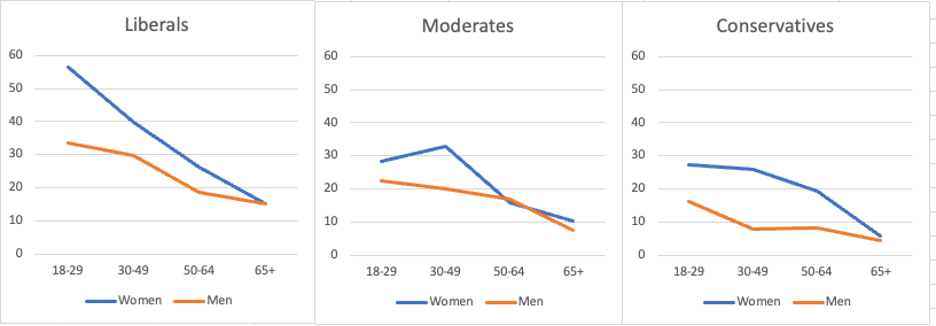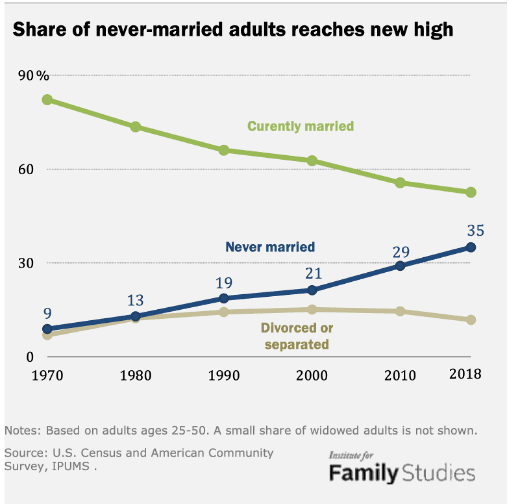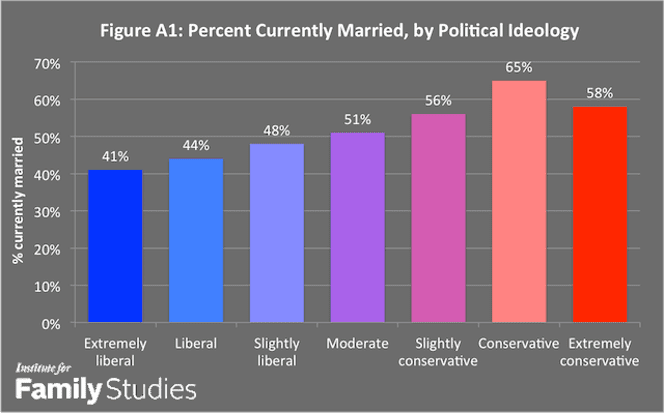
The purpose of this blog is to stimulate thought and discussion about important issues in healthcare. Opinions expressed are those of the author and do not necessarily express the views of CMDA. We encourage you to join the conversation on our website and share your experience, insight and expertise. CMDA has a rigorous and representative process in formulating official positions, which are largely limited to bioethical areas.
App Blogs, Biblical sexuality, and Sexual Revolution
Victims of the Sexual Revolution, Part 2: The Decline of Happiness, and the Plight of the Young Liberal Woman
August 17, 2023
by Steven Willing, MD
[synopsis: Increasing levels of depression and other mental illnesses in Western societies have been well-described, but there are many theories as to why. In this installment, we argue that the decline of marriage is the most critical yet overlooked factor, and why the young liberal woman suffers the most.]
“Victims of the sexual revolution,” part 1 is available here.
“All men … are endowed by their Creator with certain unalienable rights, that among these are Life, Liberty, and the pursuit of Happiness.”
—The Declaration of Independence
“Don’t worry; be happy!”
—Bobby McFarrin
It’s a reasonable assumption that most human behavior is driven by the pursuit of happiness. We chase after fame and prestige—because we think they will make us happy. We pursue wealth and power—because we think those will bring satisfaction. We seek love and friendship—because giving and receiving those things promote joy. We struggle with ego preservation—sometimes at great cost—because we believe it will make or keep us content and satisfied. Even the pursuit of altruism can be motivated by an internal wish for fulfillment; it’s just a more spiritually appearing form of self-interest.
All seek happiness through some means. But who is finding it? Now that’s an interesting question.
Throughout Western society, observers have noted increasing levels of depression, anxiety, suicide, addiction, fractured relationships and other manifestations of mental and spiritual sickness. It might be tempting for Christians to jump to the easy explanation: “These are the obvious consequences of resisting God and His design for living.” But to one who is suffering, that may come across as smug, shallow, self-righteous and condescending. Where’s the evidence? Why are things this way? Is there a way forward?
In a previous column, I noted the connection of the sexual revolution of the 1960s and 1970s with ensuing decades of declining female happiness. Correlation doesn’t prove causality, but it’s usually the first clue. That causal connection is beginning to look a lot stronger.
Some recent research sheds more light on the factors behind happiness or lack thereof. In an upcoming paper, Sam Peltzman of the University of Chicago recently reviewed five decades of data from the General Social Survey dataset on self-reported happiness and its connection with a variety of socioeconomic parameters: age, race, gender, education, marital status, income and geography. By far, the most important differentiator is being married. There was a 30-percentage point advantage of being married over being unmarried. Wealth and income conferred some advantage, as did a higher level of education. Whites on average are happier than blacks, although the difference has decreased over time. The last differentiator was political orientation: conservatives are distinctly happier than liberals.
Several of the variables cited by Peltzman are interrelated. For example, married people are also more likely to be wealthy and politically conservative. According to his analysis, though, all the differences survived controlling for other differences.
Peltzman is not the only researcher to have noticed the marriage effect. Writing in The Atlantic, Brad Wilcox and Wendy Wang noted a large gap in life satisfaction between married and unmarried mothers during and after the COVID pandemic, and mothers were more satisfied than childless women.
In SSM – Mental Health, a team of researchers examined the rise of depression among adolescents from 2005 to 2018. Across that time period, the depression index increased among all subgroups, but the worst mean scores and greatest deterioration were among liberal adolescent females, followed by liberal adolescent males.

The phenomenon of worsening mental health especially among young liberal females was also seen in Pew Research’s American Trends survey. The chart below indicates an affirmative response to the question, “Have you ever been diagnosed with a mental illness?”

Among young liberal women, more than 50 percent responded “yes.”
Across the body of research, numerous trends are apparent:
- Female happiness has been declining since the early 1970s.
- Male happiness is also declining, but not as much.
- There was a dramatic rise in mental illness in America beginning around 2011.
- Young people are impacted much more than older people.
- Young liberal women are impacted most negatively.
Now, I understand happiness is not precisely the opposite of depression in a scientific sense, but it’s still a reasonable approximation.
The salient question, then, is what is driving these trends? Given the complexity of human thought and behavior, most likely multiple forces are in play.
Noted social psychologist Jonathan Haidt has been compiling research showing a strong correlation between mental illness and smartphone usage. Not only did the rates begin to rise about the time smartphone ownership crossed the 50 percent threshold, but time spent on the phones—particularly social media—also correlates strongly. (I would argue that much of the harm in smartphone usage is mediated by disruption of healthy male-female relationships and views of sexuality, but that’s a topic for another day.)
In collaboration with Greg Lukianoff, Haidt co-authored The Coddling of the American Mind. At the time the book was conceived and written, the two had identified contemporary cultural trends almost perfectly engineered to cause depression: catastrophizing, emotional reasoning and dichotomous thinking. They focused on what they called the “Three Great Untruths:”
- What doesn’t kill you makes you weaker.
- Always trust your feelings.
- Life is a battle between good people and evil people.
Lukianoff and Haidt called it “reverse cognitive behavioral therapy,” for these principles are the near-perfect opposite of what therapists attempt to inculcate in treating depression. Their assessment is probably correct. Other researchers have proposed additional or alternative factors which might be driving the trends. What’s notably absent is the suggestion that declining happiness is a predictable consequence of the sexual revolution and its assumptions.
If, as Peltzman shows, marriage is the principal determinant of adult happiness, it logically follows that a lack of marriage could drive much if not most depression and unhappiness among young adults.
In Western nations, the marriage rate is steadily declining, while the age of first marriage is steadily trending upward. The year-to-year decline has not been pronounced, but the sum effect is that the likelihood of eventual marriage—that is, of ever getting married—has declined significantly, especially among the poorer and less educated. This chart from the Institute for Family Studies shows that the percentage of adults between 25 and 50 who have never married nearly quadrupled from 1970 to 2018:

The trend of declining happiness and life satisfaction cuts across all demographic sectors but does not affect all sectors equally. The more attractive, intelligent, extroverted and wealthy members of society enjoy a decided advantage in this regard, but other variables factor in as well. Political conservatives are significantly more likely than liberals to be married, as seen in this graphic from the Institute for Family Studies:

Hence, one should predict that conservatives are happier than liberals, and this indeed proves to be the case.
Religiously engaged individuals are also significantly more likely to be married and, again, are also significantly happier than the religiously unconnected.
Considering the paramount importance of marriage to happiness, and the degree to which religious engagement and political conservatism contribute to both happiness and marriage, the plight of the young, liberal and typically areligious female comes into sharper focus. It’s not that she doesn’t live with that deep inner desire for a lifelong partner of the opposite sex, but that realistically, the odds are stacked against her.
There is an ongoing and worsening crisis among Western young men, and her chances are not good of finding a gainfully employed young man without a criminal record who is not addicted to cannabis, pornography or video games. Driven by pornography and a casual attitude toward sex, a sizeable number of men truly are predators to be assiduously avoided.
There is an increasing educational gap: among young college graduates, women significantly outnumber men. Political polarization also creates a wedge. Increasingly, young single women identify as very liberal, while young single men identify as very conservative. The two camps are more likely to brand the other as stupid or evil than to move closer to the center, much less view the other as potential life partners. All of these elements are superimposed on a field where the “marriage market” is dominated by women, while the “market for sex” is dominated by men. When it comes to marriage, it is largely men who are calling the shots.
It makes logical sense, in this light, that young liberal women would increasingly turn to one another for companionship. From Gallup data, nearly one in four now identifies as LGBT (bear in mind, the vast majority of this group falls under the “B,” though the “T” has skyrocketed in recent years.)

Self-identification as a member of the LGBTQ population, again, is an independent risk factor for depression and other mental illnesses.
With so many converging factors, we should be astonished if the young liberal woman were not significantly more depressed. So far as future marriage is concerned, she appears trapped in a downward civilizational spiral with little hope of rescue.
The New Testament was clear that not all are destined to marry, and the apostle Paul wrote as a confirmed bachelor. However, this teaching must be placed within the broader context, that marriage is designed by God for the benefit of one another, the children and society writ large. Anything we can do to promote marriage will not only honor God but also promote better mental health and social functioning. We must learn to identify the myths of the sexual revolution and expose them at every opportunity. We can emphasize marriage in the mentoring and discipleship of young adults and encourage marrying earlier rather than later. Playing the matchmaker should be framed as honorable (because it is), not meddlesome. We can strive to help young men become better prospective mates—but so long as sex remains “cheap,” some will lack the incentive.
Is your congregation actively engaged in the defense of biblical sexuality? If not, why not?

